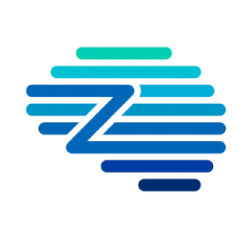For procurement professionals working within infrastructure and public-works projects across Sweden, Denmark, Norway and Finland, the term infrastructure procurement in Nordics carries strong strategic weight. Whether sourcing for roads, rail, energy assets or large-scale civil works, the demands on construction sourcing, tender evaluation rigour and supplier governance have never been higher. This guide outlines best practices for Nordic infrastructure procurement, showcasing the blend of category strategy, process design and supplier governance needed to succeed. A focused section describes how our platform at Zycus supports these exact priorities.
TL;DR
- Infrastructure procurement in Nordics is accelerating with major investments in transport, energy, and public works.
- Procurement leaders must balance cost, compliance, and sustainability across complex supplier networks.
- Implement rigorous tender evaluation beyond price to ensure transparency and value.
- Strengthen supplier governance and risk control through digital platforms.
- Embed circular economy and sustainability into sourcing decisions.
- Use Zycus’s AI-powered Source-to-Pay platform to automate tender scoring, enhance audit trails, and improve decision-making.
Market Context and Key Trends
According to market research, the Scandinavian construction and infrastructure sector is set to grow at a 6.1 % CAGR from 2025 to 2030, driven by transport, energy and public-works projects (Source: Mordor Intelligence). Simultaneously, procurement research highlights the Nordic region’s unique public procurement regimes and construction-industry culture—fragmented project organisations, heavy regulation and the need for governance frameworks. For infrastructure procurement teams this context translates into three imperatives: sourcing alignment with long-term investments, tender processes tuned to public-works compliance, and supplier chains capable of scale, sustainability and innovation.
Moreover, construction sector commentary notes that while the residential segment is slowing, infrastructure projects (especially transport and energy) remain resilient (Source: IndustryRadar.com). These dynamics make your sourcing strategy a true lever, not just a cost exercise.
Best Practices for Construction & Public-Works Sourcing
1. Define Strategic Categories and Project Scope
Map the macro-categories relevant to infrastructure: civil engineering, onsite construction, prefabricated modules, utilities integration, digital infrastructure etc. Segment by spend size, contract duration, supplier risk and sustainability exposure. With modern methods of construction gaining impetus in the Nordics, materials, labour and prefabrication need strategic sourcing lenses.
2. Rigorous Tender Evaluation for Public Works
Public-works procurement in the Nordics demands tender evaluation frameworks that go beyond cost to include sustainability, local content, innovation and long-term performance. Best practice checklist:
- Use scoring models that balance cost, quality, sustainability, delivery risk and innovation potential
- Build decision logs, audit trails and transparent evaluation documentation (especially for public procurements)
- Include compliance criteria: labour regulation, health & safety, environmental impact, circular-economy materials
- Engage stakeholders early (design, legal, environment) and run supplier briefings to level the field
3. Supplier Governance & Risk Mitigation
Infrastructure projects bring supplier risk: scale, financial exposures, subcontracting chains, supply-chain disruptions. Governance practices that provide control:
- Pre-qualification of suppliers: financial health, prior performance in Nordic infrastructure, HSEQ compliance
- On-site audit triggers and milestone-based payments
- Supplier performance scorecards linked to contract KPIs: defect rate, delivery delays, safety incidents, sustainability metrics
- Shortlist backup suppliers or supply-chain alternatives when single-source segments exist
4. Process Efficiency & Digital Workflow
Sourcing large-scale infrastructure programs benefits from digital workflows: intake to RFX to contract award to supplier management. For Nordic procurement pros:
- Use standardised templates, categories and workflows across jurisdictions
- Automate tender issuance, bid collection and evaluation scoring
- Link sourcing events to contract management, spend analysis and supplier management for unified view
5. Sustainability & Circular Economy Integration
Nordic infrastructure procurement increasingly emphasises low-carbon materials, circular-economy construction and green infrastructure delivery. The “Toolbox for Future-Proof Construction” initiative underlines how procurement must embed circular-business-models in sourcing. Tender specifications should reflect these shifts: criteria for recycled materials, modular construction, low-carbon concrete, supplier sustainability reporting and lifecycle cost modelling.
How Zycus Helps Infrastructure Procurement Teams
Zycus has built a procurement platform with features designed to address the demands of infrastructure procurement Nordics. Key strengths:
- Unified Source-to-Pay Architecture: Modules for eSourcing, contract management, supplier management, spend analysis and procurement orchestration allow infrastructure sourcing events to link directly into contracts and supplier performance data—ensuring continuity of data and governance.
- AI-Powered Sourcing and Analytics: The Merlin Agentic AI Platform enables scenario-modelling (e.g., supply-chain disruption, price volatility, prefabrication risk), supports bid-evaluation automation and improves decision-making in tender scoring.
- Supplier Governance & Audit Readiness: The supplier-management module supports pre-qualification, audit tracking, performance scorecards and integrated risk-management—all crucial in large infrastructure programmes.
- Sustainability and Localisation Support: The platform supports multiple entities, languages, tax/currency regimes and region-specific contract logic—ideal when operating across Nordic countries and in public-works contexts.
- Nordic Market Engagement: Zycus’s AI World Tour is bringing regional events with tailored sessions for Nordic procurement professionals, underscoring local relevance.
By adopting Zycus, infrastructure procurement teams in the Nordics can build a sourcing ecosystem that is efficient, auditable, sustainable, risk-aware and future-ready.
Your Next Steps for Infrastructure Procurement Success
- Start by mapping your current sourcing/leverage categories: where are spend pools, supplier risks and tender refresh points?
- Define a tender-evaluation framework that expands beyond cost: include sustainability, innovation, supply-chain resilience and local/regional content.
- Ensure your supplier governance model is matched to project size: for large public works, pre-qualify high-risk suppliers and build backup plans.
- Standardise and digitise your intake → sourcing → contract → supplier cycle to ensure process efficiency and data integrity.
- Embed sustainability criteria within sourcing and contractor selection—review material standards, lifecycle cost impact, circular-economy clauses.
- Evaluate tech platforms now: select one that supports sourcing, contracts, supplier management and analytics—and works in a Nordic multisite/regional environment.
Final Thoughts
Infrastructure procurement in the Nordics is complex—but full of opportunity. When procurement teams adopt strategic sourcing, rigorous tender evaluation, robust supplier governance and digital workflows—supported by the right platform—they elevate procurement from transactional to transformational.
By aligning with market trends (growth in infrastructure investment, modular methods, public-works focus) and embedding best practices, your sourcing strategy becomes a competitive advantage rather than simply a compliance checkbox. Partnering with a technology vendor like Zycus—one that understands Nordic procurement opportunity and provides end-to-end infrastructure sourcing support—positions your team to deliver value, manage risk, advance sustainability and streamline process.
The time to strengthen your infrastructure procurement roadmap, deploy best-in-class processes and engage the right suppliers—with full digital backing—is right now.
FAQs
Q1. Why is infrastructure procurement strategic in the Nordics?
Because large-scale investments in transport, energy, and civil works require disciplined sourcing, governance, and sustainability compliance to ensure value and accountability.
Q2. What are best practices for public-works tender evaluation?
Use scoring models that balance cost, sustainability, innovation, and compliance while maintaining audit-ready documentation and transparent decision frameworks.
Q3. How can procurement teams manage supplier risk in infrastructure projects?
Through supplier pre-qualification, financial and HSEQ assessments, performance scorecards, and on-site audits linked to contract milestones.
Q4. How does Zycus support Nordic infrastructure procurement?
Zycus’s platform connects sourcing, contract management, supplier governance, and analytics—powered by Agentic AI for smarter tender evaluation and risk control.
Q5. What sustainability measures apply to Nordic construction sourcing?
Low-carbon materials, circular-economy sourcing, lifecycle-cost analysis, and supplier sustainability reporting are integrated into tender criteria.
Related Reads:
- Success Story: European Hotel Group Experiences Increased Productivity Through A Stable And Scalable Zycus P2P Solution
- Watch Video: Driving procurement resilience amidst economic downturn & uncertainty: A European Perspective
- Research Report: Ten Megatrends and insights for the European CPOs
- Source-to-pay vs Procure-to-pay: A Guide
- How S2P Applications Supercharge Your Bottom Line
- Source To Pay Optimization in Procurement: Benefits and Best Practices
- Your Guide to Source-to-Pay
- You Can’t Miss these 7 European Procurement Best Practices































































